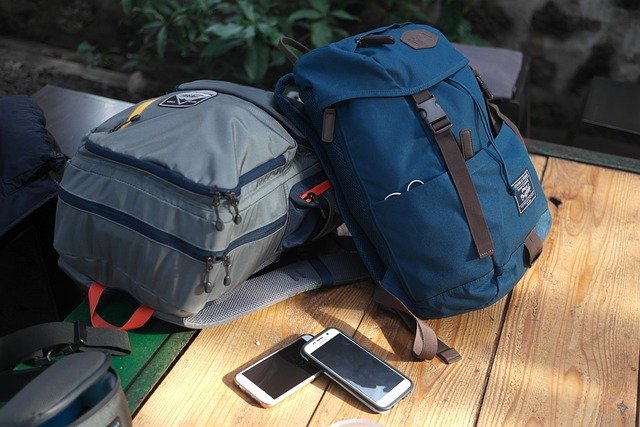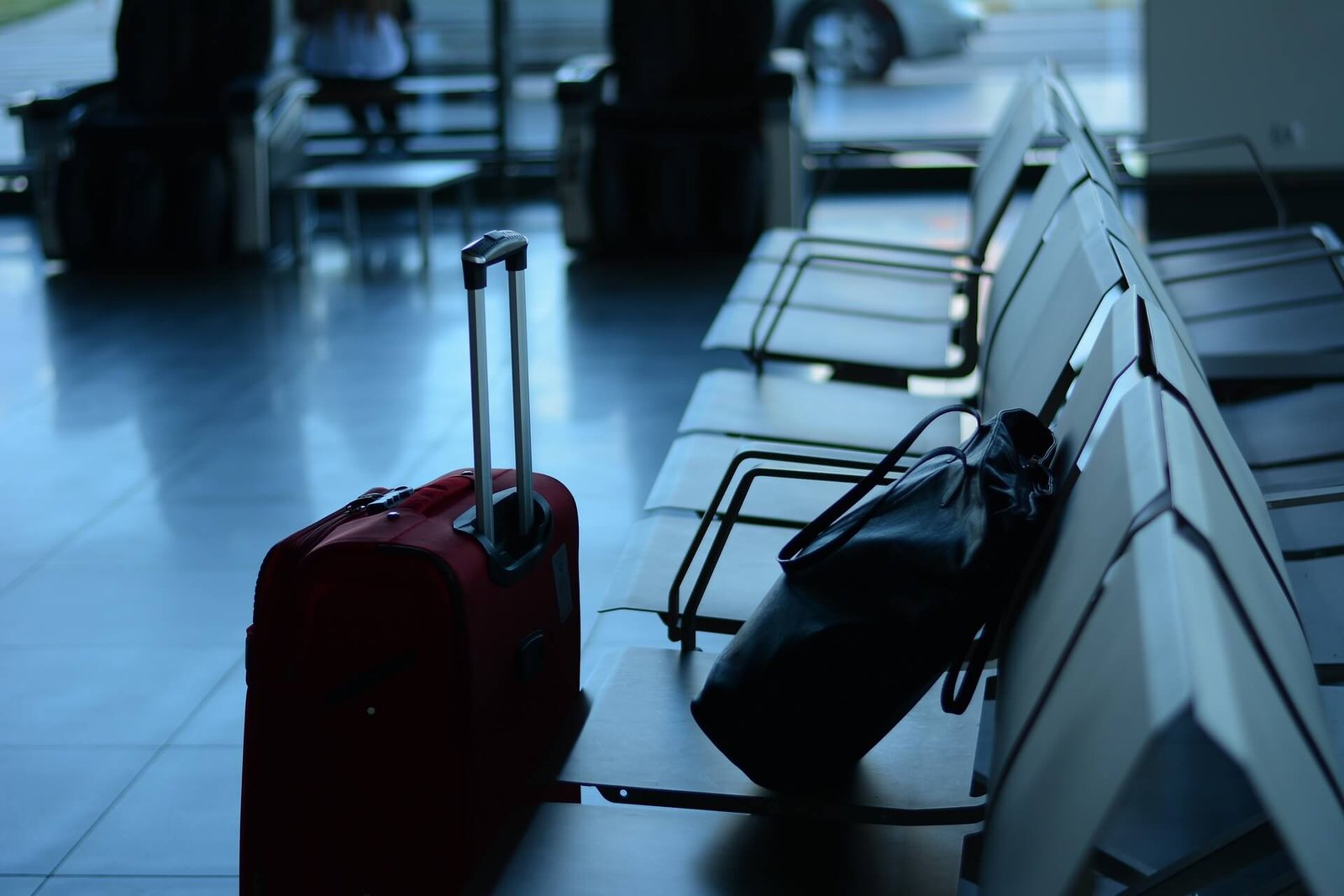How to Keep Your Travel Bags Looking Brand New
We all know that feeling of excitement when embarking on a new adventure, be it exploring bustling cities or relaxing on sandy beaches. And what better companion on our journey than our trusty travel bags? Our travel bags carry our essentials, memories, and a little piece of home wherever we go. But have you ever wondered how to keep them looking brand new, even after countless trips?
we will uncover the secrets to ensuring your travel bags maintain their pristine condition, allowing you to travel in style for years to come. From protecting against stains and wear to rejuvenating worn-out materials, we've got you covered. So, let's delve into the world of travel bag care and discover simple, yet effective methods to make your beloved bags look as good as new!
I. The importance of keeping travel bags in good condition
Maintaining travel bags in good condition is essential for several reasons.
A sturdy and well-maintained bag ensures the safety of your belongings during transit.
From the moment you check in your luggage to the time it arrives at your final destination, multiple handling processes and environmental factors can subject your bags to rough treatment.
By closely attending to the condition of your travel bags, you reduce the risk of damage and loss.
Other hand, a well-maintained travel bag contributes to a hassle-free journey.
Imagine arriving at your dream destination, only to find that the seams of your bag have ripped apart or the wheels have fallen off.
Such situations can quickly turn a perfect trip into a logistical nightmare. By regularly tending to your travel bags, you ensure they perform optimally and won't let you down when you need them most.
A. Share the impact of regular wear and tear on luggage
Over time, travel bags endure significant wear and tear due to the various stresses they face. From being dragged through airports to being tossed onto conveyor belts, luggage goes through a lot. Neglecting to address these issues can lead to severe consequences.
The accumulation of minor damages, such as loose threads, worn-out zippers, or weakened handles, can quickly escalate into major problems.
A small tear in the fabric may grow larger, compromising the bag's structural integrity and potentially resulting in your belongings spilling out.
Malfunctioning wheels can impede your mobility, leaving you struggling with an overweight and unwieldy bag. By addressing minor issues promptly, you prevent them from escalating into more significant concerns that could ruin your travel experience.
B. Preview the tips and strategies for maintaining luggage in top condition
To ensure your travel bags remain in prime condition, we have compiled a list of valuable tips and strategies that will serve as your guide:
1. Invest in high-quality luggage: Choosing durable and reliable travel bags as your companions is the first step towards long-term maintenance. Look for bags with sturdy construction, reinforced zippers, and durable materials to withstand the rigors of travel.
2. Clean your bags regularly: Dust, dirt, and stains not only impact the appearance of your bags but can also lead to material deterioration. Regularly clean your bags using mild soap and water, following the manufacturer's recommendations.
3. Inspect for damages: Routinely inspect your bags for any signs of wear and tear, such as loose threads, frayed fabric, or malfunctioning hardware. Address these issues promptly to prevent further damage.
4. Reinforce weak areas: Strengthen vulnerable spots on your bags, such as corners or seams, using adhesive patches or reinforcing stitches. This simple action can significantly extend the lifespan of your luggage.
5. Be mindful of weight limits: Overpacking your travel bags can strain their structural integrity. Respect weight limits set by airlines and avoid overloading your bags to prevent damage.
6. Protect your bags during transit: Utilize protective covers, bag straps, or luggage locks to shield your bags from potential scratches, spills, or theft. These additional measures contribute to the overall well-being of your travel bags.

II. Choose the right luggage materials
When it comes to choosing the perfect luggage for your travel needs, considering the right materials is crucial.
The luggage material determines the durability, weight, and overall performance of your travel companion.
we will discuss the different types of luggage main compartment materials, their advantages and disadvantages, and provide tips for selecting the right material that suits your specific travel requirements.
A. Discuss the different types of luggage materials
1. Polyester:
Polyester is one of the most common materials used in luggage manufacturing. This synthetic fabric offers excellent durability and resistance to abrasion.
Luggage made of polyester is often lightweight, water-resistant, and affordable.
It also allows for a wide range of designs and colors, providing a variety of options to match your style.
However, polyester may not be as sturdy as other materials and can be prone to wear and tear over time.
2. Nylon:
Nylon is another popular material choice for luggage. Similar to polyester, it is lightweight, resistant to abrasion, and offers good water resistance.
Nylon luggage is known for its strength and durability, making it suitable for frequent travelers.
Additionally, it is available in a variety of designs and offers a smooth and sleek appearance. However, high-quality nylon luggage can be expensive compared to other materials.
3. Polycarbonate:
Polycarbonate is a durable and impact-resistant thermoplastic material commonly used in hard-side luggage.
It provides excellent protection for your belongings and is resistant to scratches and cracks.
Polycarbonate luggage is lightweight, making it easier to handle during travel. It is also available in various stylish designs.
However, polycarbonate luggage might be costlier compared to other options.
4. ABS (Acrylonitrile Butadiene Styrene):
ABS is another material commonly used for hard-side luggage. It offers durability, impact resistance, and the ability to withstand rough handling.
ABS luggage is generally more affordable compared to polycarbonate options. Nevertheless, it may not endure extreme temperatures as well as other materials and can be prone to scratches and scuffs.
B. Advantages and disadvantages of each material
1. Polyester
– Advantages:
– Lightweight and easy to carry
– Affordable
– Good water resistance
– Wide variety of designs and colors
– Disadvantages:
– Not as durable as other materials
– Prone to wear and tear over time
2. Nylon
– Advantages:
– Lightweight yet strong and durable
– Resistance to abrasion
– Good water resistance
– Sleek and stylish appearance
– Disadvantages:
– Can be more expensive compared to other materials
3. Polycarbonate
– Advantages:
– Excellent durability and impact resistance
– Resist scratches and cracks
– Lightweight
– Stylish designs available
– Disadvantages:
– Higher cost compared to other materials
4. ABS
– Advantages:
– Durable and impact-resistant
– Affordable
– Withstands rough handling
– Disadvantages:
– Not as effective in extreme temperatures
– Prone to scratches and scuffs
C. Tips for choosing the right material for your travel needs
1. Consider your travel style: If you frequently travel by air or need lightweight luggage, materials like polyester and nylon are great options.
For individuals seeking durability and optimum protection, hard-side luggage made of polycarbonate or ABS can be more suitable.
2. Evaluate your budget: Different materials come with varying price ranges.
Consider your budget and select a material that offers the right balance between durability, performance, and affordability.
3. Think about the intended use: If you often travel to destinations with extreme weather conditions, such as cold or hot climates, materials like polycarbonate or ABS might be better suited to withstand the elements.
4. Assess your storage needs: Consider the capacity and compartments offered by the luggage alongside the material. Some materials allow for expandable options, providing extra storage space when needed.
III. Packing and Unpacking Tips
A. How to Properly Pack Your Luggage to Prevent Damage
When preparing for a trip, packing your luggage efficiently is crucial to ensure that your belongings remain intact and undamaged. Here are some useful tips to help you pack your luggage properly:
1. Start by choosing a durable and appropriately sized suitcase or bag that can accommodate your travel needs. Ensure that it has sturdy zippers and handles.
2. Before placing any items in your luggage, line the bottom with a layer of clothing or soft padding to create a cushioning effect and protect against impact.
3. Roll or fold your clothing items neatly to maximize space and minimize wrinkles. Place heavier items at the bottom of your bag to distribute the weight evenly.
4. To prevent fragile items from breaking, wrap them in bubble wrap or clothing and place them in the middle of your luggage, surrounded by softer items for added cushioning.
5. For shoes, stuff them with socks or small items to maintain their shape and utilize the space efficiently. Place them in shoe bags or wrap them in a plastic bag to avoid dirt or odors spreading.
6. Utilize compression packing cubes to condense your clothing, making more room in your luggage. These cubes not only keep your items organized but also prevent excessive movement that could lead to damage.
7. Consider using packing organizers, such as toiletry bags or pouches, to keep small items and accessories organized and readily accessible. This will facilitate an efficient and stress-free unpacking experience.
8. To protect breakable items like electronics, cameras, or glass bottles, place them in the center of your bag, cushioned by clothing or soft materials. Alternatively, carry them in your hand luggage for added security.
9. Secure any loose items, such as chargers or cords, by placing them in ziplock bags or cable organizers. This prevents tangles and potential damage.
10. Finally, close your luggage carefully, ensuring that the zippers are fully fastened and not strained. Avoid overpacking to prevent undue pressure on the bag's seams and materials.
B. Unpacking Techniques to Avoid Stretching or Tearing the Fabric
Once you've reached your destination, unpacking your luggage with care is vital to maintain the condition of your items and prevent any damage. Follow these simple techniques to unpack efficiently:
1. Find a clean and designated unpacking area, such as a bed or table, to avoid placing your luggage on dirty or uneven surfaces.
2. Open your bag gently without excessive force or pulling, as this can strain the fabric and potentially cause tearing.
3. Start by removing any fragile or breakable items first, taking them out with caution. Inspect them for any signs of damage or shifting during transit.
4. Unpack your clothes by unrolling or unfolding them carefully. Avoid jerking or yanking them, as this can stretch or crease the fabric. Hang them or place them in drawers if available.
5. When unpacking shoes, handle them gently to prevent damage or scuff marks. Remove any stuffing or plastic bags before placing them in your storage area.
6. Take out your toiletries and accessories using a systematic approach. Unpack them one by one, ensuring that any lids or caps are securely closed to avoid spillage or leakage.
7. As you unpack, keep an eye out for any loose seams or damage to your luggage. If you notice any issues, consider repairing or replacing your bag before your next trip.
C. Using Packing Cubes or Organizers to Keep Items Organized and Minimize Strain on the Bag
Packing cubes and organizers can greatly enhance your travel experience by keeping your belongings well-organized and reducing strain on your bag. Here are some benefits and tips for using them effectively:
1. Packing cubes are lightweight fabric containers that help compartmentalize your items within your luggage. They come in various sizes and are excellent for categorizing different types of clothing or accessories.
2. By using packing cubes, you can easily locate specific items without having to rummage through your entire bag. This saves time and keeps your belongings wrinkle-free.
3. When using packing cubes, try to assign specific cubes for different types of items, such as one cube for shirts, one for pants, and another for undergarments. This arrangement not only keeps things organized but also simplifies the unpacking process.
4. Packing cubes are incredibly helpful when sharing a suitcase with others. Assign each person a different cube or color-coded organizer to maintain a clear distinction between personal belongings.
5. Another useful organizing tool is packing folders, which securely hold dress shirts or blouses to prevent creasing. These folders keep your clothing crisp and tidy during your journey.
6. When it comes to minimizing strain on your bag, packing cubes can play a significant role. They help distribute the weight evenly throughout your luggage, reducing the strain on zippers, seams, and the overall structure of the bag.
7. To further optimize organization and minimize strain, consider investing in a bag with built-in organization compartments or extra features like straps or compression straps. These additions can enhance stability and prevent items from shifting during travel.

IV. Cleaning and Maintenance
Luggage, an essential companion for any traveler, requires proper cleaning and maintenance to ensure its longevity and functionality. In this article, we will discuss various cleaning techniques for different types of luggage materials, provide tips for removing stains and odors effectively, and highlight the importance of regular maintenance to prevent deterioration.
A. Proper Cleaning Techniques for Different Types of Luggage Materials
1. Leather Luggage:
Leather is a timeless material known for its durability and elegance.
To clean leather luggage, start by wiping off any surface dirt or dust using a soft, dry cloth.
For stubborn stains, lightly dampen the cloth with a mild leather cleaner or a mixture of water and mild soap.
Gently rub the stained area in circular motions and then wipe it dry. Remember to condition the leather periodically to keep it moisturized and supple.
2. Nylon or Polyester Luggage:
Nylon and polyester luggage are popular for their lightweight and water-resistant properties. Begin by using a soft brush or cloth to remove any loose dirt or debris.
Then, prepare a solution of warm water and gentle detergent.
Dip a cloth into the solution and gently scrub the exterior of the luggage. Rinse the cloth and wipe off the soapy residue.
Finally, allow the luggage to air dry in a well-ventilated area.
3. Hardshell or Polycarbonate Luggage:
Hardshell luggage is known for its durability and resistance to scratches. To clean hardshell or polycarbonate luggage, start by removing any loose dirt or debris using a soft brush or cloth.
Next, prepare a mixture of warm water and mild soap.
Dampen a cloth with the solution and gently scrub the exterior surface. Rinse the cloth and wipe off any soapy residue, then let the luggage air dry completely.
B. Tips for Removing Stains and Odors
1. Stain Removal:
To remove stains from fabric or interior, begin by gently pressing a clean cloth onto the stained area to soak up as much of the stain as you can. Refrain from rubbing it, as this could cause the stain to spread.
Depending on the fabric, you have the option to use specific stain removers or a combination of mild soap and water.
Strictly follow the guidelines given with the stain remover and softly massage it into the stain, if necessary. Wash the area with fresh water and allow it to dry naturally.
2. Odor Removal:
To combat unpleasant odors, sprinkle baking soda inside the luggage compartments and allow it to sit overnight. Baking soda absorbs odors effectively.
The next day, vacuum or wipe away the baking soda residue.
For a fresh scent, you can also place scented sachets or dryer sheets in the compartments.
C. Regular Maintenance to Prevent Deterioration
Keeping your luggage in good condition is crucial for preventing damage and prolonging its lifespan. Here are some important suggestions:
1. Care for handles and wheels: Regularly check the handles and wheels for wear or any signs of damage. Apply a silicone-based lubricant to the wheels if needed, to keep them rolling smoothly. Use a mild soap solution to clean the handles and remove any dirt.
2. Don't overload: Avoid putting too much weight in your luggage, as it can stress the zippers, seams, and handles, potentially causing damage. Stick to the recommended weight limits and don't go over them.
3. Storage: When you're not using your luggage, store it in a dry, clean area away from direct sunlight. Don't put heavy objects on top of it, as this can distort its shape.
4. Protective covers: Think about using protective covers or sleeves to protect your luggage from scratches, scrapes, and dust while you're traveling.
V. Storage
Proper storage techniques are essential to preserve the quality of your luggage while it is not in use. By following a few simple guidelines, you can prevent damage, maintain the shape and structure of your bags, and safeguard them from pests and moisture.
A. Proper storage techniques to prevent damage while not in use
1. Clean your luggage:
Before storing your bags, it is crucial to clean them thoroughly. Remove any dirt, dust, or stains from the surface using a mild detergent and a soft cloth. Allow the bags to dry completely before proceeding with storage.
2. Empty the luggage:
Ensure that your bags are empty before storing them. Remove any items, such as clothes, toiletries, or electronics, from the compartments and pockets. This will prevent the growth of mold, mildew, or unpleasant odors during storage.
3. Protect delicate components:
If your luggage contains fragile components, such as wheels, handles, or zippers, take extra precautions to protect them. Use bubble wrap or soft cloth to cover these areas and reduce the risk of damage during storage.
4. Avoid storing heavy items on top:
When stacking your luggage, place lighter items on top. This prevents excessive pressure on the lower bags and minimizes the risk of deformations or structural damage.
B. How to store luggage in a way that preserves its shape and structure
1. Utilize luggage covers:
Investing in luggage covers is a great way to protect your bags from dust, scratches, and other potential damage. These covers offer an additional layer of protection and help preserve the shape and appearance of your luggage.
2. Stuff with soft materials:
Fill empty spaces within your bags with soft materials, such as clothing, socks, or towels. This helps maintain the bag's shape and prevents it from collapsing or becoming misshapen over time.
3. Avoid tight squeezes:
Avoid storing your luggage in tight, cramped spaces where they may be subjected to excessive pressure. This can lead to dents, creases, or even structural damage. Instead, choose a storage area with enough room for your bags to breathe.
C. Tips for protecting luggage from pests and moisture in storage
1. Use protective covers:
Cover your luggage with plastic or fabric covers to shield it from dust, insects, and potential moisture. Ensure that the covers are clean and completely dry before placing them over your bags.
2. Keep storage area dry:
Excess humidity may result in the development of mold, mildew, and unpleasant smells. Select a storage space that is dry and properly ventilated. Steer clear of areas with a tendency for moisture, like basements or attics, as they can heighten the likelihood of harm to your belongings.
3. Consider using silica gel packets:
Silica gel packets are excellent moisture absorbers. Place a few of these packets inside your bags and seal them tightly. They will help combat excess moisture during storage and keep your luggage in optimal condition.
As we conclude this comprehensive guide on keeping luggage in good condition, let's recap the key points that highlight the importance of maintaining your travel companions in tip-top shape. We will also encourage you to implement the valuable tips and strategies discussed throughout this article and leave you with final thoughts on the value of maintaining luggage to keep it looking brand new.
A. Recap the importance of keeping luggage in good condition
1. Longevity and Durability: By taking care of your luggage, you can significantly increase its lifespan. Regular maintenance, such as cleaning and repairing, ensures that your bags will withstand the test of time and accompany you on many journeys to come.
2. Protection for Belongings: Well-kept luggage provides a haven for your valuables. By keeping your bags intact, you reduce the risk of any damage occurring to your items, preventing potential loss or inconvenience.
3. Enhanced Travel Experience: Quality luggage not only makes your journey more enjoyable but also adds to your overall travel experience. When your bags are properly maintained, you can travel with peace of mind, knowing that your belongings are well-protected and easily accessible.
B. Encourage readers to implement the tips and strategies discussed
Now that you have gained a comprehensive understanding of the importance of luggage maintenance, we encourage you to implement the following tips and strategies to ensure your bags remain in top condition:
1. Regular Cleaning: Make it a habit to clean your luggage after each trip, removing any dirt, stains, or residue. Use suitable cleaning agents and follow the manufacturer's instructions to prevent any damage.
2. Proper Storage: When not in use, store your luggage in a clean and dry space, preferably in a dust bag or cover. This protects it from dust, humidity, and potential scratches.
3. Handle with Care: Be mindful of how you handle your luggage, especially during transportation and storage. Avoid tossing, dragging, or overloading it, as these actions can result in unnecessary wear and tear.
4. Prompt Repairs: Address any minor damages or malfunctions immediately to prevent them from worsening. Repair or replace broken wheels, zippers, or handles promptly to maintain the integrity of your luggage.
C. Final thoughts on the value of maintaining luggage to keep it looking brand new
Maintaining your luggage's pristine condition goes beyond mere aesthetics. It is an investment in the longevity, durability, and protection of your travel essentials. By dedicating time and effort to keeping your bags in good shape, you not only enhance the practicality of your travel experience but also ensure that your luggage remains a reliable companion for years to come.
Remember, a well-maintained bag not only safeguards your belongings but also adds a touch of sophistication to your travel style. So, embrace the importance of luggage maintenance, implement the provided tips, and enjoy the countless adventures that lie ahead.

